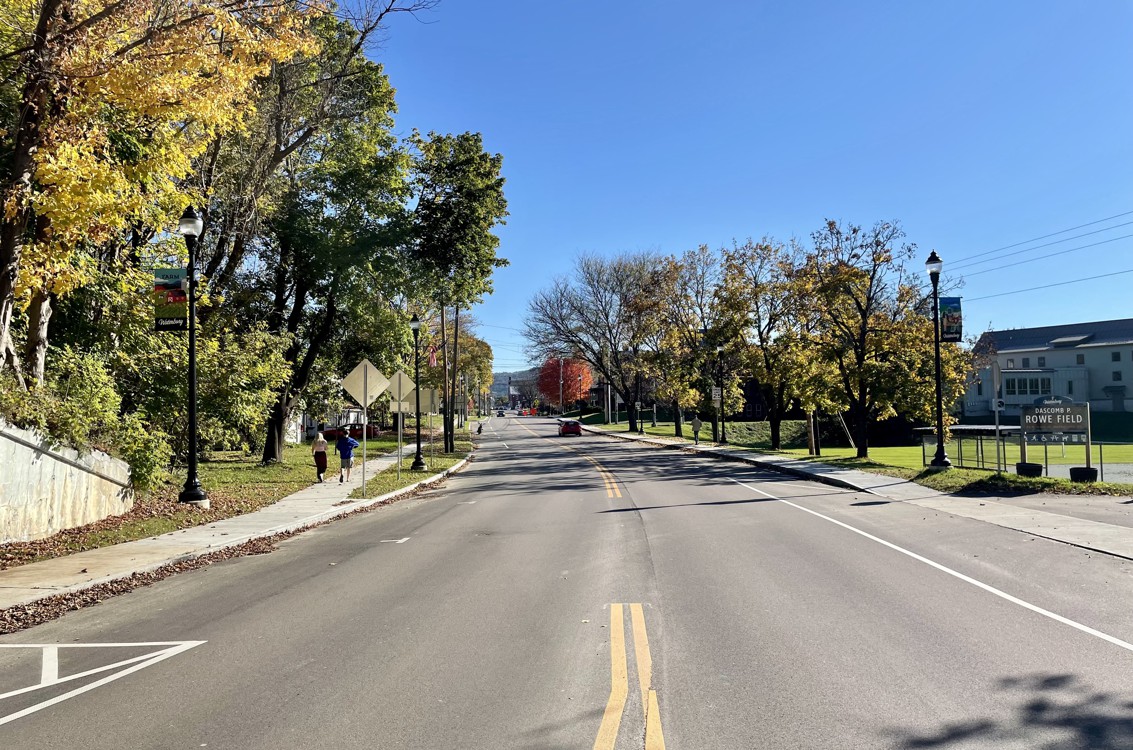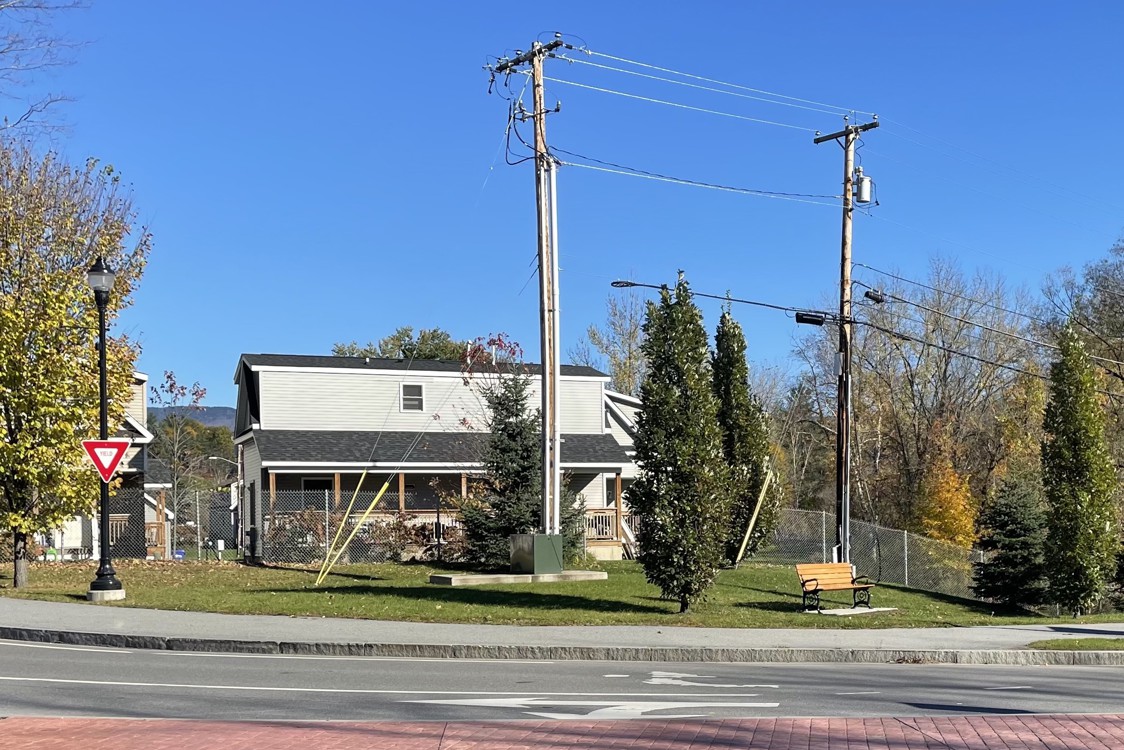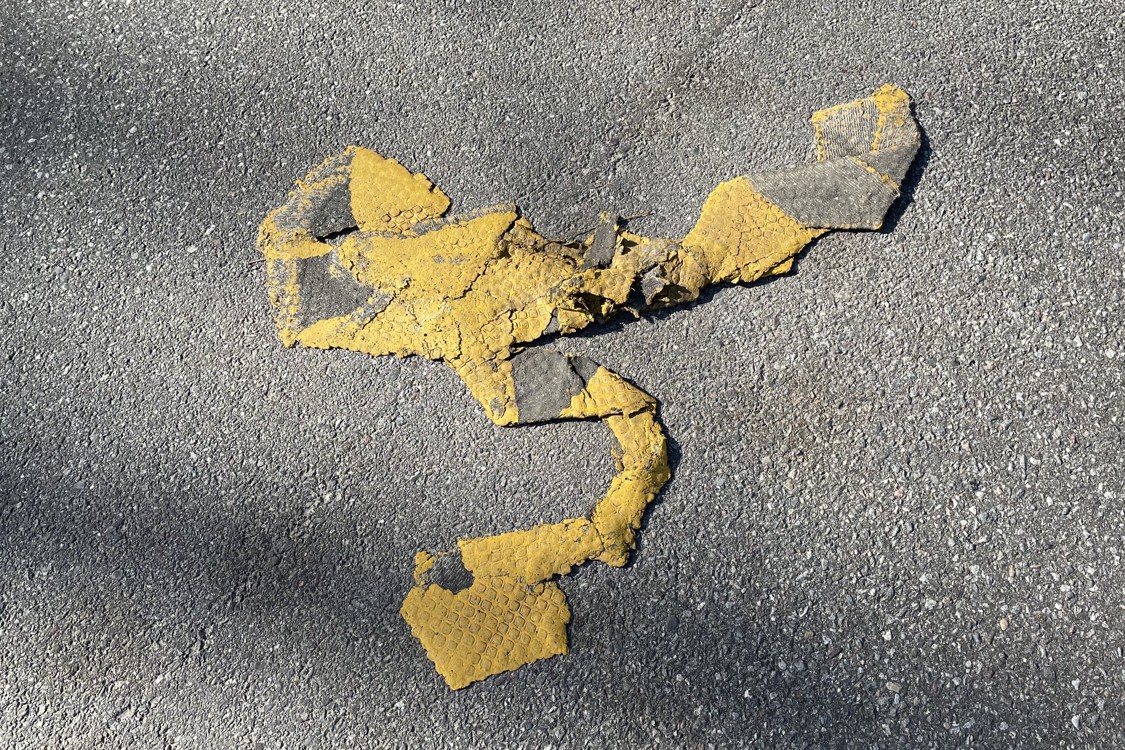Antisocial Streets
Most streets aren’t made for people; they’re made for cars. If you’re like me, someone who watches City Beautiful and follows Strong Towns, this is no surprise.
What does surprise me is that modern town planners continue to repeat the same mistakes in spite of greater public awareness of better approaches.
Case in point: My adopted hometown of Waterbury, VT recently completed a three-year construction project on Main Street. The road is an artery through downtown and also serves commuters and travelers from I-89 to Duxbury, Moretown, and the Mad River Valley.
Within a few blocks of its center, you can find several restaurants, bars, banks, and bakeries as well as a bed and breakfast, a bookstore, and a fire house. It’s quaint and walkable.
But the new Main Street, the street itself, is dangerous and unfriendly.

For most of its length, the street is two lanes narrowed by “free” parking on both sides. Sidewalks run adjacent, only one of which is buffered by grass.
Nearly all of this parking is unused, even at the busiest times of day. Most businesses along Main Street already own and maintain their own lots, and at its center there are no fewer than three public parking lots.
Waterbury isn’t a big town. It doesn’t need this much parking. Not only is the unused pavement an eyesore and a waste, but it squeezes pedestrians, runners, and bicyclists. They must compete with cars for space, a dicey proposition in a state where the best-selling vehicle is the F-150 pickup.
As one of the few amenities provided to pedestrians, several park benches were installed. Here’s one nestled in between a busy roundabout, a chain-link fence, and a power transformer.

I haven’t seen anyone sit here.
In most city plans, cost is a driving factor. My town isn’t poor, but it also isn’t rich. But this one-mile project cost $21 million. How did we pay for it? American taxpayers picked up 95% of the tab. That’s a lot of (other people’s) money for a lousy street. And if the deteriorating road markings are any indication, even drivers are unsafe.

The street’s designers may have had good intentions; an abundance of obvious parking invites people to stop and enjoy downtown. But the reality is endless pavement that detracts from the natural beauty of central Vermont. Empty spaces as far as the eye suggest no one stops here anymore. The void symbolizes a dying town.
Invariably, renderings of projects like this one set the same idealic scene: people strolling between shops with bicyclists peddling past. But that’s only sometimes the reality once construction stops. To have a street that actually realizes this vision, it’s not enough to be a resident who knows better, and it’s wrong to assume professionals will do better, you need to participate in the process and fight for good streets.
The alternative may mean finding yourself sitting on a bench, watching cars drive in circles. If you can hear yourself think, over the endless screech of the wheels on pavement, you’ll wonder where we went wrong. ■
